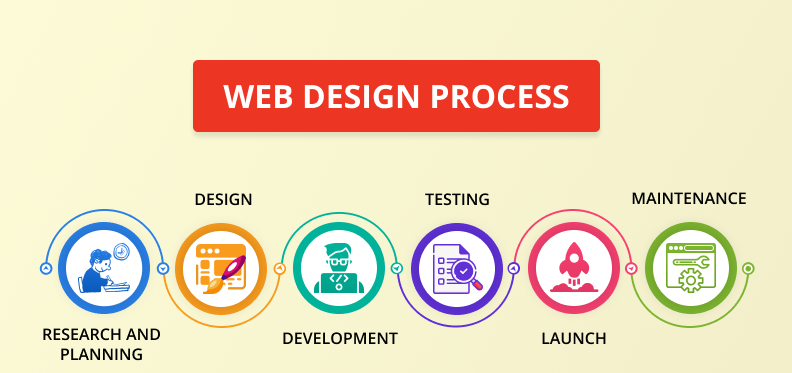Website designing involves creating and organizing the visual and functional aspects of a website. It's a multidisciplinary field that encompasses several elements, such as layout, content, graphics, search engine optimization (SEO), and user experience (UX) design. Here’s a comprehensive look at what website designing entails: Top Internet Website Designers in Delhi

Key Components of Website Design
- Layout and Structure:
- Wireframing: The process begins with wireframing, which involves creating a blueprint for the website. This outlines the structure and layout, including the placement of text, images, and other elements.
- Grid Systems: These help in arranging content in a clean and structured way, making the design visually appealing and easy to navigate.
- Visual Design:
- Colour Scheme: Colors are chosen based on the brand’s identity and the psychological impact they have on users.
- Typography: The selection of fonts is crucial for readability and conveying the right tone.
- Imagery and Graphics: High-quality images, icons, and graphics enhance the visual appeal and user engagement.
- User Experience (UX):
- Navigation: A well-designed navigation system helps users find information quickly and easily.
- Responsiveness: Websites must be responsive, meaning they should work well on various devices and screen sizes.
- Loading Speed: Optimizing the website for fast loading times improves user satisfaction and SEO.
- Content:
- Copywriting: Engaging and clear text is essential for conveying the website’s message.
- Multimedia: Videos, infographics, and animations can make content more engaging.
- Functionality:
- Interactive Elements: Forms, buttons, and other interactive components need to work seamlessly.
- Compatibility: The website should be compatible with different browsers and devices.
- SEO (Search Engine Optimization):
- On-Page SEO: This includes optimizing meta tags, headings, and content with relevant keywords.
- Technical SEO: Ensuring the website has a clean code, fast loading times, and is mobile-friendly.

Process of Website Designing
- Research and Planning:
- Understanding the client’s needs and goals.
- Analyzing competitors and the target audience.
- Creating a project timeline and milestones.
- Design:
- Developing wireframes and prototypes.
- Designing the visual elements and layout.
- Gathering feedback and making revisions.
- Development:
- Writing clean and efficient code.
- Integrating CMS (Content Management System) if required.
- Ensuring cross-browser compatibility and responsiveness.
- Testing:
- Conducting usability testing to ensure a smooth user experience.
- Fixing bugs and issues.
- Performing SEO checks.
- Launch and Maintenance:
- Deploying the website.
- Monitoring performance and making necessary updates.
- Regularly updating content and software to keep the website secure and relevant.

Tools and Technologies
- Design Tools: Adobe XD, Sketch, Figma, and Photoshop for creating designs and prototypes.
- Development Tools: HTML, CSS, JavaScript, and frameworks like React or Angular.
- Content Management Systems: WordPress, Joomla, and Drupal for managing content easily.
- Testing Tools: BrowserStack, Google Lighthouse, and usability testing platforms.

Trends in Website Design
- Minimalism: Clean and simple designs with plenty of white space.
- Dark Mode: Offering a dark theme option for user comfort and aesthetic appeal.
- Micro-Interactions: Small animations that enhance user interaction without overwhelming them.
- Voice User Interface (VUI): Incorporating voice commands for navigation and search.
- AI and Chatbots: Using artificial intelligence to improve user support and interaction.
Website designing is a dynamic field that combines creativity with technical skills. As technology evolves, designers must stay updated with the latest trends and tools to create websites that are not only visually appealing but also functional and user-friendly. Read more... For More topics